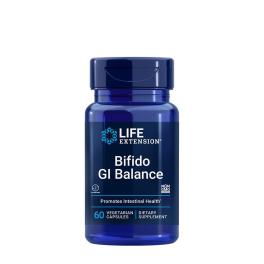Histamine Intolerance | Find out all about it!
If histamine were a comic book character, it would be a notorious anti-hero. Most people associate histamine with coughing, runny nose, itching and a host of unpleasant allergic reactions. As a hormone, the effects of histamine on our bodies are much more complex than that. Specifically: without histamine, our immune system would hardly function, but its overproduction (i.e. histamine intolerance) has adverse effects.

In today’s article, we’ll explain what is the infamous histamine and what role does it play? We’ll review the mechanisms of histamine intolerance and finally, what nutritional supplements can help treat it?
What is histamine and what is its role?
Histamine is a neurotransmitter, i.e. a brain neurotransmitter.1 Basophil granulocytes and mast cells are capable of producing histamine only – both terms refer to a type of immune cell found in the blood. Histamine can be stored in these cells only in association with chondroitin-4-sulphate and heparin.2
In short, histamine is involved in allergic reactions. We always associate allergy with unpleasant hay fever, nasal congestion, headaches and the like, but it is through allergic reactions that our body can work out the pathogens. So, without the mechanism of allergy, even the weakest infection would overwhelm us.
The full effects of histamine are best described and understood through the work of the four receptors that sense them.
H1 receptor3-5
Activation of the H1 receptor (i.e. the binding of histamine) provokes the typical allergic/anaphylactic response; i.e. skin iching, pain, sweating, bronchoconstriction, decreased blood pressure, increased heart rate, vasodilatation, and increased vascular permeability. In addition, H1 receptors affect the sleep-wake cycle, appetite, body thermoregulation, emotion, memory/learning and movement. In addition, H1 receptors are the most involved in the development of asthma, predispose to smooth muscle spasms and can swell mucous membranes. So everything related to allergy is through the H1 histamine receptor. In this respect, anaphylactic shock is most likely to the caused by overactivation of H1 receptors. H1 receptor blocking drugs are a broad class of allergy medicines and can also help treat conjunctivitis.
H2 receptor6,7
The H2 receptor stimulates the production of the gastric acid, which in turn lowers blood pressure and affects the permeability of the vascular wall. It can also predispose to headaches, sweating, increased heart rate and bronchoconstriction. So the H2 receptor is also pro-inflammatory, but its effect is not nearly as strong as that of the H1 receptor. In contrast, drugs that block the H2 receptor have a major role to play in the treatment of horseshoe ulcers and in preventing their recurrence.
H3 receptor8
The H3 receptor mainly affects the nervous system; it influences the levels of „brain hormones” such as dopamine, serotonin, noradrenaline and acetylcholine. It can also dilate blood vessels near the nasal mucosa. H3 receptors also affect the production of additional histamine by neurons and mast cells.
H4 receptor9
They play an important role in inflammation and autoimmune processes.
Reading about these effects, you might think that histamine is a really evil thing and surely everyone has asked the question: why do we it if it can cause a number of unpleasant and even life-threatening conditions (think anphylactic shock, an excessive allregic reaction)?
You do need histamine in small amounts! Why?
- In the right proportions, histamine plays a huge role in the immune system; that is, it protects against pathogens.
- It maintains adequate levels of stomach acid – stomach acid is of course necessary for proper digestion.
- It dilates blood vessels to help keep the blood flowing properly.
- It can help you stay energetic throughout the day by regulating your sleep-wake cycle.
- Adequate levels also contribute to a balanced mental state.
How is histamine produced?
To make histamine, you need the amino acid L-histidine (which is considered essential, so your body does not produce it, it has to be replaced from an external source). Histidine is made into histamine by an enzyme called L-histidine decarboxylase, with the help of vitamin B6.
How does histamine break down?
They are already two known pathways for histamine removal; histamine N-methyltransferase (HNMT) and the enzyme diamine oxidase (DAO) do the lion’s share of histamine degradation. To understand histamine blockers, it is important to know that while the first enzyme is the only enzyme involved in the breakdown of histamine released in the airways. The other enzyme, DAO, is responsible for breaking down dietary histamine. The proper functioning of the histamine-removing enzyme DAO also requires vitamin B6, as does the production of histamine (so reducing vitamin B6 intake is not the answer).
How can histamine intolerance develop?
If the two enzymes listed above do not work properly or their levels are reduced, histamine can accumulate in the body, which can lead to histamine intolerance. This can cause a variety of symptoms, such as redness, hives, headaches, diarrhoea, bloating, nasal congestion or difficulty breathing.
There are several possible causes of histamine intolerance:
- DAO enzyme deficiency or low levels: this may be genetic or the result of certain diseases (such as inflammatory bowel disease).
- Inhibition of DAO enzyme function: certain drugs (e.g. painkillers, antidepressants: diclofenac, calvulanic acid, aspirin) and additives (e.g. benzoates, sulphites, glutamates) can block the function of the DAO enzyme.
- Excessive histamine intake: high intakes of histamine from food and drink can contribute to the development of intolerance. Examples include aged cheeses, alcohol (especially red wine), smoked meats, canned fish, tomatoes, spinach and fermented foods.
- Gut flora imbalance: some bacteria in the gut also produce histamine, so if the gut flora is imbalanced, this can also contribute to histamine intolerance. In addition, probiotics may not always help to manage gut flora, as most of them also produce histamine, so the diet needs to be corrected first (if the diet does not provide enough fibre to feed the gut flora, use fibre powder).
Symptoms of histamine intolerance
As we have seen through the four histamine receptors, histamine acts throughout the body, so the symptoms of histamine intolerance can be body-wide and occur many combinations. This is precisely why they are difficult to recognise.10,11
- Gastrointestinal sympoms: abdominal pain, nausea, abdominal cramps, vomiting, diarrhoea, constipation, stomach acidity and bloating (unpleasant feeling of fullness after meals).
- Respiratory complaints: nasal congestion, sneezing, coughing, runny nose, asthma symptoms.
- Skin problems: eczema, oedema, itching, hives, redness and other skin lesions.
- Cardiovascular effects: increased heart rate, but decreased blood pressure, dizziness.
- Central nervous system symptoms: migraines, headaches, severe drowsiness after meals, mood disturbances, anxiety.
- Other complaints: painful menstruation, muscle twitching (shaking) and sweating.
It is important to note that the main symptoms of histamine intolerance mimic those of allergy, but the diagnosis can only be made by a doctor. Not all allergic symptoms can be explained by histamine intolerance, in fact!
The diagnosis is made after other diseases have been ruled out, and a complaints and food diary is kept.
Low levels of DAO enzyme in the blood also confirm suspicion of the disease, but not in all cases.12-14
Treatment of histamine intolerance
The primary treatment is a low histamine diet, which can drastically reduce symptoms.
Drug treatment starts by blocking the histamine receptor. These drugs can help not only with the histamine intolerance, but also with autoimmune diseases and other allergy problems.
The doctor may also often prescribe DAO enzyme replacement tablets, which are not available without a prescription. The question may arise: why is DAO recommended and not the other enzyme: HNMT?
- Dietary histamine is broken down mainly by the enzyme DAO.
- The HNMT enzyme mainly affects the body’s internal processes, rather than histamine from food.
- However, this does not mean that the HNMT is not important, in fact, if the HNMT is not functioning properly, it can also lead to histamine sensitivity, but it will affect symptoms caused by histamine of internal origin (e.g. central nervous system complaints, allergic reactions).
As mentioned above, before/alongside medication, the doctor will always recommend a low histamine diet. Many sources divide foods into four groups according to their histamine content.15 However, individual tolerance varies for most foods, so it is adviseable to start with a strict diet („zero foods”) and then slowly introduce higher histamine-containing ingredients, starting with „ones”.

What supplements can help with histamine intolerance?
As we have just seen, following a low histamine diet means excluding a lots of foods. This can predispose you to a deficiency states. The main nutrients that can be consumed with a strict diet are:
- Vitamin B6: vitamin B6 is necessary for the efficient functioning of the enzyme DAO and its deficiency may contribute to the exacerbation of histamine intolerance.
- Vitamin B9 and B12: a low histamine diet often involves avoiding meats (especially processed meats), fish and eggs, which are rich sources of vitamin B12. B-vitamins play an important role in nervous system function and blood formation. GAL+ Multivitamin also contains the B-complex vitamins in more that sufficient amounts and in highly bioavaible – naturally occuring -forms.
- Vitamin C: many fruits and vegetables (e.g. citrus fruits, strawberries, tomatoes, spinach) that are high in vitamin C can cause histamine release in the body, so these should be avoided. Lower histamine sources such as kiwifruit, cantaloupe and berries can be consumed in small amounts. GAL+ Multivitamin also contains high levels of vitamin C.
- Calcium: since many dairy products are excluded from the diet, calcium deficiency may develop sooner. The histamine diet allows for the consumption calcium-fortified soya milks, oat milks and foods with a higher calcium content such as: chickpeas, seasame cream and figs. If you are not getting enough of this, you may want to take calcium in the form of Wise Tree Naturals Calcium Complex.
- Iron: may develop due to avoidance of red meat and fish. Iron deficiency can lead to anemia, which causes fatigue and weakness. Iron supplementation is particularly recommended for women, as menstruation can further reduce iron levels.
- Omega 3: due to the avoidance of fish and seafood, people on a low histamine diet often do not get enough omega 3 fatty acids, especially DHA and EPA. These fatty acids are important for brain and cardiovascular function. GAL+ Multivitamin also contains Omega 3s, not in high amounts, but in combination with flaxseed oil can also ensure adequate omega 3 levels in the blood.
Supplementation should start with the replenishment of these vitamins, minerals and fatty acids.
Other supplements that may help with histamine intolerance:
- Flaxseed16: Rich in alpha-linolenic acid (ALA), flaxseed oil can stimulate the production of one of the Omega-3s (EPA). This has been shown is research to reduce allergy symptoms.
- Probiotics17-20: Not all probiotics are recommended for histamine intolerance, as certain strains of bacteria produce histamine. One particularly interesting study found that the gut flora of healthy people contains on average more bifidobacteria than that of people with histamine intolerance.22 This study also found that products fermented with bifidobacteria contain less histamine. Strains of probiotics unable to produce histamine23-26: lactobacillus plantarum, bifidobacterium longum. Strains to avoid as they produce histamine: lactobacillus casei, lactobacillus bulgaricus, lactobacillus helveticus. Most other probiotic strains are not sufficiently well known. Many sources also consider the use of bifidobacterium infantis strains to be safe. Pro tip: Vitamin360 recommends Life Extension Bifido GI Balance for histamine intolerance.
- Quercetin: a natural anti-histamine flavonoid that helps prevent the release of histamine in the body (by „blocking” the cell wall of histamine-producing mast cells) and also has anti-inflammatory properties. Inflammation and the immune response are closely linked.21
Vitamin360's recommendation against histamine intolerance:
- GAL+ Multivitamin
- Natur Tanya Flax Seed Oil (250 ml)
- Life Extension Bio-Quercetin (30 Veg Kapszula)
- Life Extension Bifido GI Balance
- +1: If a calcium deficiency due to a low histamine diet is suspected, take: Wise Tree Naturals Calcium Complex (60 Capsule)
The multivitamin does not contain iron, so it is a good idea to have regular blood tests while on a low histamine diet and to take extra iron (in the amounts prescribed by your doctor) if you suspect anaemia.
It is important to note that the above-mentioned supplements are not a substitute for medical advice or medication, but are intended to complement the therapy that the doctor has formulated/suggested.
- Patel RH, Mohiuddin SS. Biochemistry, Histamine. [Updated 2023 May 1]. In: StatPearls [Internet]. Treasure Island (FL): StatPearls Publishing; 2024 Jan-. Available from: https://www.ncbi.nlm.nih.gov/books/NBK557790/
- Dy M, Schneider E. Histamine-cytokine connection in immunity and hematopoiesis. Cytokine Growth Factor Rev. 2004 Oct;15(5):393-410. [PubMed] [Reference list]
- Lieberman P. The basics of histamine biology. Ann Allergy Asthma Immunol. 2011 Feb;106(2 Suppl):S2-5. [PubMed]
- Xie H, He SH. Roles of histamine and its receptors in allergic and inflammatory bowel diseases. World J Gastroenterol. 2005 May 21;11(19):2851-7. [PMC free article] [PubMed]
- Solomon A, Pe'er J, Levi-Schaffer F. Advances in ocular allergy: basic mechanisms, clinical patterns and new therapies. Curr Opin Allergy Clin Immunol. 2001 Oct;1(5):477-82. [PubMed]
- Mazzoni A, Young HA, Spitzer JH, Visintin A, Segal DM. Histamine regulates cytokine production in maturing dendritic cells, resulting in altered T cell polarization. J Clin Invest. 2001 Dec;108(12):1865-73. [PMC free article] [PubMed]
- Bertaccini G, Coruzzi G. Extragastric H2-receptors. J Clin Gastroenterol. 1983;5 Suppl 1:57-70. [PubMed]
- Varty LM, Hey JA. Histamine H3 receptor activation inhibits neurogenic sympathetic vasoconstriction in porcine nasal mucosa. Eur J Pharmacol. 2002 Oct 11;452(3):339-45.
- Zampeli E, Tiligada E. The role of histamine H4 receptor in immune and inflammatory disorders. Br J Pharmacol. 2009 May;157(1):24-33. [PMC free article] [PubMed]
- Comas-Basté, Oriol, Sònia. „Histamine and Other Biogenic Amines in Food. From Scombroid Poisoning to Histamine Intolerance” (angol nyelven). Biogenic Amines. DOI:10.5772/intechopen.84333.
- Schnedl, Wolfgang J., Dietmar. „Evaluation of symptoms and symptom combinations in histamine intolerance”. Intestinal Research 17 (3), 427–433. o. DOI:10.5217/ir.2018.00152. ISSN 1598-9100. PMID 30836736.
- Reese I, Ballmer-Weber B, Beyer K, Fuchs T, Kleine-Tebbe J, Klimek L, Lepp U, Niggemann B, Saloga J, Schäfer C, Werfel T, Zuberbier T, Worm M. German guideline for the management of adverse reactions to ingested histamine: Guideline of the German Society for Allergology and Clinical Immunology (DGAKI), the German Society for Pediatric Allergology and Environmental Medicine (GPA), the German Association of Allergologists (AeDA), and the Swiss Society for Allergology and Immunology (SGAI). Allergo J Int. 2017;26(2):72-79. doi: 10.1007/s40629-017-0011-5. Epub 2017 Feb 27. PMID: 28344921; PMCID: PMC5346110.
- Comas-Basté O, Sánchez-Pérez S, Veciana-Nogués MT, Latorre-Moratalla M, Vidal-Carou MDC. Histamine Intolerance: The Current State of the Art. Biomolecules. 2020 Aug 14;10(8):1181. doi: 10.3390/biom10081181. PMID: 32824107; PMCID: PMC7463562.
- Weidenhiller M, Layritz C, Hagel AF, Kuefner M, Zopf Y, Raithel M. Histaminintoleranz-Syndrom (HIS): Vielfalt der Mechanismen von physiologischer, pathophysiologischer und toxischer Wirkung und deren Unterscheidung [Histamine intolerance syndrome (HIS): plethora of physiological, pathophysiological and toxic mechanisms and their differentiation]. Z Gastroenterol. 2012 Dec;50(12):1302-9. German. doi: 10.1055/s-0032-1325487. Epub 2012 Dec 7. PMID: 23225559.
- Reese, I. (2018. szeptember 1.). „Nutrition therapy for adverse reactions to histamine in food and beverages”. Allergologie Select 2 (1), 56–61. o. DOI:10.5414/ALX386. ISSN 2512-8957. PMID 31826041.
- Sawane K, Nagatake T, Hosomi K, Hirata SI, Adachi J, Abe Y, Isoyama J, Suzuki H, Matsunaga A, Fukumitsu S, Aida K, Tomonaga T, Arita M, Kunisawa J. Dietary Omega-3 Fatty Acid Dampens Allergic Rhinitis via Eosinophilic Production of the Anti-Allergic Lipid Mediator 15-Hydroxyeicosapentaenoic Acid in Mice. Nutrients. 2019 Nov 22;11(12):2868. doi: 10.3390/nu11122868. PMID: 31766714; PMCID: PMC6950470.
- Sánchez, B., Delgado, S., Blanco-Míguez, A., Lourenço, A., Gueimonde, M., & Margolles, A. (2017). Probiotics, gut microbiota, and their influence on host health and disease. Molecular Nutrition & Food Research, 61(1), 1600240. https://doi.org/10.1002/mnfr.201600240
- Di Cagno, R., Coda, R., De Angelis, M., & Gobbetti, M. (2013). Exploitation of vegetables and fruits through lactic acid fermentation. Food Microbiology, 33(1), 1-10. https://doi.org/10.1016/j.fm.2012.09.003
- Pugin, B., Barcik, W., Westermann, P., Heider, A., Wawrzyniak, M., & Akdis, C. A. (2017). Probiotics and their role in the human gut histamine balance. Allergy, 72(9), 1445-1453. https://doi.org/10.1111/all.13159
- Comas-Basté, O., Sánchez-Pérez, S., Veciana-Nogués, M. T., Latorre-Moratalla, M. L., & Vidal-Carou, M. C. (2019). Histamine intolerance: The current state of the art. Biomolecules, 10(1), 118. https://doi.org/10.3390/biom10010118
- Mlcek J, Jurikova T, Skrovankova S, Sochor J. Quercetin and Its Anti-Allergic Immune Response. Molecules. 2016 May 12;21(5):623. doi: 10.3390/molecules21050623. PMID: 27187333; PMCID: PMC6273625.
- Schink M., Konturek P.C., Tietz E., Dieterich W., Pinzer T.C., Wirtz S., Neurath M.F., Zopf Y. Microbial patterns in patients with histamine intolerance. J. Physiol. Pharmacol. 2018;69:579–593. doi: 10.26402/jpp.2018.4.09. [DOI] [PubMed] [Google Scholar]
- Shokryazdan P, Sieo CC, Kalavathy R, Liang JB, Alitheen NB, Faseleh Jahromi M, Ho YW. Probiotic potential of Lactobacillus strains with antimicrobial activity against some human pathogenic strains. Biomed Res Int. 2014;2014:927268. doi: 10.1155/2014/927268. Epub 2014 Jul 3. PMID: 25105147; PMCID: PMC4106073.
- Spano G, Russo P, Lonvaud-Funel A, Lucas P, Alexandre H, Grandvalet C, Coton E, Coton M, Barnavon L, Bach B, Rattray F, Bunte A, Magni C, Ladero V, Alvarez M, Fernández M, Lopez P, de Palencia PF, Corbi A, Trip H, Lolkema JS. Biogenic amines in fermented foods. Eur J Clin Nutr. 2010 Nov;64 Suppl 3:S95-100. doi: 10.1038/ejcn.2010.218. PMID: 21045859.
- Hidemura A, Saito H, Fukatsu K, Matsuda T, Kitayama J, Ikeda S, Kang W, Nagawa H. Oral administration of Bifidobacterium longum culture condensate in a diet-restricted murine peritonitis model enhances polymorphonuclear neutrophil recruitment into the local inflammatory site. Nutrition. 2003 Mar;19(3):270-4. doi: 10.1016/s0899-9007(02)01060-2. PMID: 12620533.
- Kim, J. K., Kim, J. Y., Kim, H. I., Han, M. J., & Kim, D. H. (2019). Bifidobacterium longum and Lactobacillus plantarum alleviate house dust mite allergen-induced allergic rhinitis by regulating IL-4, IL-5, and IL-10 expression. Food and Agricultural Immunology, 30(1), 581–593. https://doi.org/10.1080/09540105.2019.1608161





![GAL GAL+ Multivitamin [new recipe] (205.9 g) GAL GAL+ Multivitamin [new recipe] (205.9 g)](https://en.vitamin360.com/img/42678/2280035000/264x264,rq75p/gal-plus_multivitamin_hatcimke.webp?time=1725263607)
